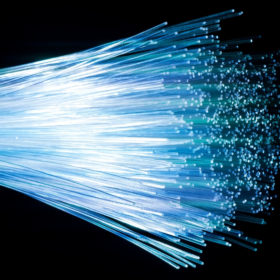Fiber optic endpoint cables are becoming increasingly popular for decorative lighting applications, such as star ceilings, endpoint signs, and other creative projects. These cables consist of individual strands of PMMA acrylic optical fibers, which are capable of transmitting light over long distances without any loss of brightness or color. Unlike traditional lighting systems, fiber optic endpoint cables do not require electricity to power individual light sources, making them safe and easy to install.

The Basics of Fiber Optic Endpoint Cable for Decorative Lighting:
- Structure:
Fiber optic endpoint cables used for decorative lighting are typically composed of a bundle of individual PMMA acrylic optical fibers. Each fiber consists of a core, which is surrounded by a cladding material that reflects light back into the core, preventing it from escaping the fiber. The fibers are then bundled together to form a cable, which can be cut to the desired length for the specific application.
- Functionality:
Fiber optic endpoint cables used for decorative lighting work by transmitting light from a single source to many endpoints, such as individual points on a star ceiling. The light source can be a simple LED or halogen lamp, or a more complex system that includes color-changing capabilities. The light is then transmitted through the individual fibers in the cable, which can be cut to different lengths to create different lighting effects.
- Installation:
Installation of fiber optic endpoint cables for decorative lighting is relatively simple, and can be done by anyone with basic DIY skills. The cable can be easily cut to the desired length, and the individual fibers can be stripped and trimmed to create the desired lighting effect. The cable can be secured in place using a variety of methods, including clips, staples, or adhesive.
- Advantages:
Fiber optic endpoint cables offer a number of advantages over traditional lighting systems for decorative applications. Firstly, the cables are completely safe, as they do not require any electrical current to power individual light sources. This makes them ideal for use in areas where electricity is not readily available or where safety is a concern. Additionally, fiber optic endpoint cables can transmit light over long distances without any loss of brightness or color, making them ideal for creating stunning visual effects.
In conclusion, fiber optic endpoint cables are an excellent choice for decorative lighting applications, such as star ceilings and endpoint signs. Their ability to transmit light over long distances without any loss of brightness or color, combined with their safety and ease of installation, make them a popular choice for designers and DIY enthusiasts alike.